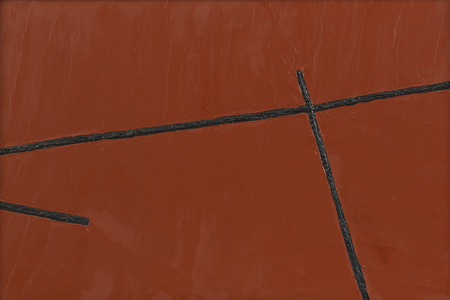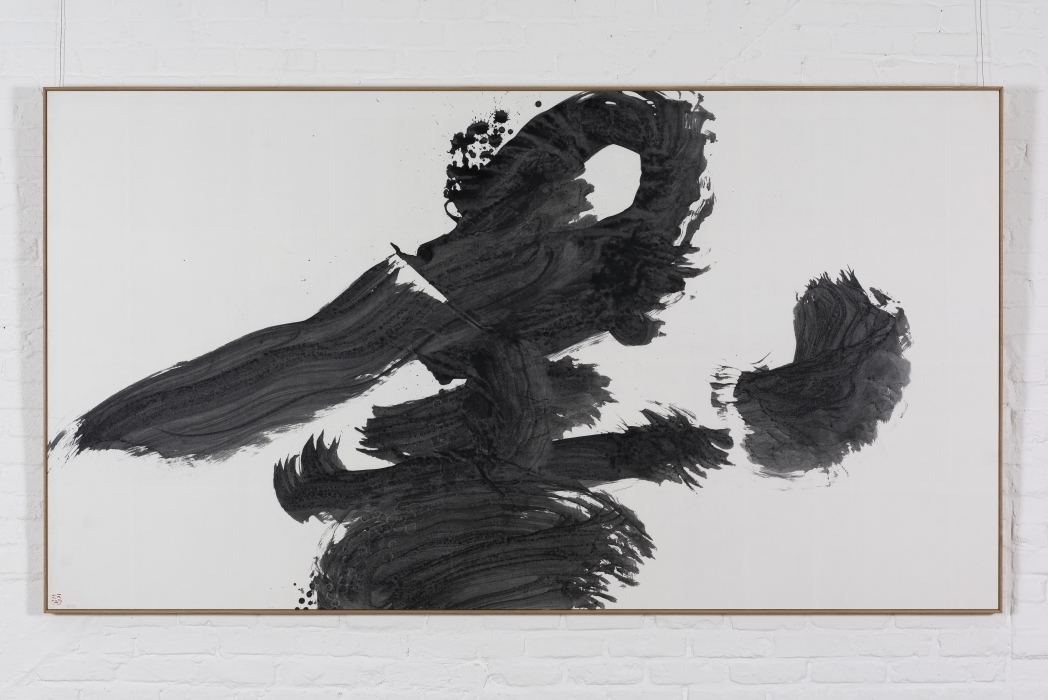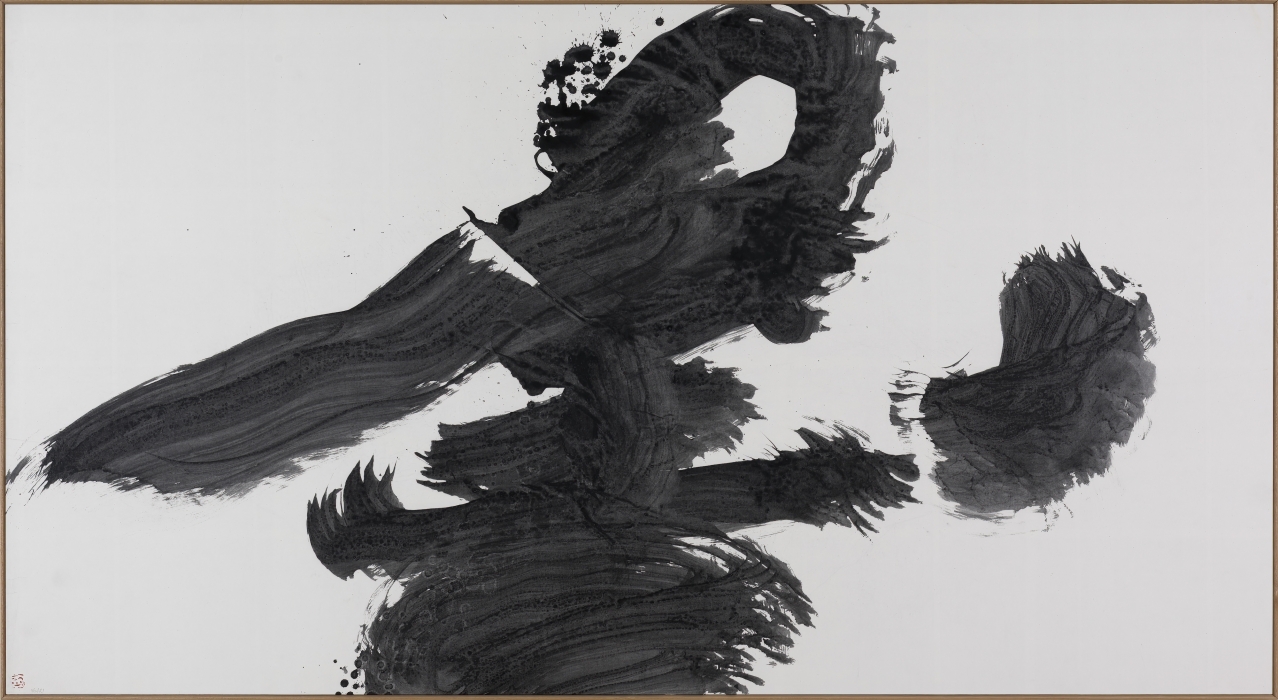Product Description
7289 Takeo Yamaguchi (1902-1983)
Kō (Suburbs)
Oil on board
Signed, titled and dated September 1972 in Japanese on a label affixed to the reverse, framed
Dimensions: H. 31cm x W. 44.5cm (12¼” x 17¾”)
Published: Yamaguchi Takeo Sakuhin Shu (Catalogue Raisonne of Takeo Yamaguchi), (Tokyo, 1981), no.370
Takeo Yamaguchi was born in Seoul Korea. He moved to Tokyo in 1921 at the age of 19 and began studying painting under Okada Saburosuke (1869-1939). The following year he was accepted into the increasingly popular department of Western painting at the Tokyo Art Academy. His course of study surveyed all the major European avant-garde movements of the previous two decades. Yamaguchi was particularly impressed by Cubism for its reduction of form and colour to a flattened and two dimensional painted surface. After graduating in 1927, Yamaguchi moved to Paris and continued his studies of avant-garde European painting where he worked at the studio of the sculptor Ossip Zadkine (1890-1967) and became friends with painter Ogisu Takanori (1901-1986).
In 1931 Yamaguchi returned to Tokyo by which time his painting had evolved and reached a certain degree of abstraction where his figures had dissolved into thick black lines and the landscape backgrounds had morphed into coloured blocks. This metamorphosis however, kept his art outside the two main categorisations used in Japan during the pre-war period, which strictly divided painting into either the Western figurative style of oil painting or the nihonga Japanese style. This antiquated system led Yamaguchi along with other likeminded artists such as Jiro Yoshihara (1905-1972) and Keisuke Yamamoto (1911-1960) to form the Nika-kaigroup also known as Kyūshitsu-kai (Society of the Ninth Space) in 1933. The group, which opposed the dual categorisation of painting, appealed to Yamaguchi who on his return to Japan sought a more permissive environment in which to continue painting towards avant-garde modernism and abstraction.
During the years of the Second World War Yamaguchi had been quietly and steadfastly creating severe non-figurative forms until his ascension to critical acclaim in 1954 when he was awarded a prize at the Contemporary Japanese Art Exhibition, Tokyo. Thus in the mid-1950’s it was almost without warning that Yamaguchi found himself a sudden pioneer of a revolutionary trend: pushed to the very front ranks of Japanese abstract artists with his work exhibited in important international exhibitions including the inaugural exhibition of the Guggenheim, New York in 1959. He was involved in the Society of Avant-garde Japanese Artists and in 1953 founded the Japanese Abstract Art Club. In 1954 he became professor at the Musashino Art Academy and later that same year published a book entitled From Primitiveness to Modern Design.
His work from that period onwards was exclusively painted in multiple thick impasto layers using only three colours; black, ochre and deep burnt sienna. The texture and depth of tone achieved from the multiple layering of pigments gives Yamaguchi’s work an earth like quality and is considered to be an homage to the soil of his birthplace the Korean peninsula. Yamaguchi strived to interact with the innermost framework and structure of a subject, merging figure and ground, seeking to awake in his forms the soul and depth of nature.
Works by the artist can be found in a number of museum collections including: Guggenheim Museum, New York; Metropolitan Museum of Modern Art, New York; Brooklyn Museum, New York; Menard Art Museum, Nagoya; Shizuoka Prefectural Museum of Art, Shimane Art Museum, Museo de Arte Moderna, Sao Paulo; National Museum of Modern Art, Tokyo; Municipal Museum, Kagoshima; Museum of Modern Art, Kamakura.
Selected solo exhibitions:
1939 Ginza Seijusha Gallery, Tokyo
1968 Masashino Art Academy, Tokyo
Minami Gallery, Tokyo
1969 Nihonbashi Gallery, New York
1970 Yamagata-ya, Kagoshima
1976 Ashiya Gallery, Ashiya
Merry Exhibition (Ceramic Pictures), Osaka
1978 Suzukawa Gallery
1979 Morioka Dainichi Gallery, Morioka
1980 Munincipal Art Museum, Kitakyūshu
Selected group exhibitions:
1931 Nika-ten, Tokyo; regular participation until 1963
1939 Kyushitsu-kai
1947 Bijutsudantai rengo ten (Union of Art Associations Exhibition); regular participation until 1951
1953 Abstraction and Fantasy, national Museum of Modern Art, Tokyo
1954 18th Exhibition of American Abstract Art, New York
1955 3rd Sao Paulo Biennial, Sao Paulo
1956 Japan Pavillion, Venice Biennale
1958 Contemporary Japanese Painting (Exhibition touring eleven European cities)
1963 7th Sao Paulo Biennial, Sao Paulo
1965 The New Japanese Painting and Sculpture, San Fransisco Museum of Modern Art; MOMA New York
1970 Aso Saburo, Osawa Shoshuke, Yamaguchi Takeo, Saison Gallery, Tokyo
1974 Traditional and Modern Japan, Staedtisches Kunstmuseum, Dusseldorf
Japan in Louisiana, The Louisiana Museum of Modern Art, Denmark (Travelling exhibition)
1980 Yamaguchi Takeo and Horiuchi Masakazu, National Museum of Modern Art, Tokyo
1986 Arishima Ikuma, Togo Seiji, Yamaguchi Takeo, Municipal Art Museum, Kagoshima
Prizes:
1954 Contemporary Art Exhibition
1962 Japanese Ministry of Culture









